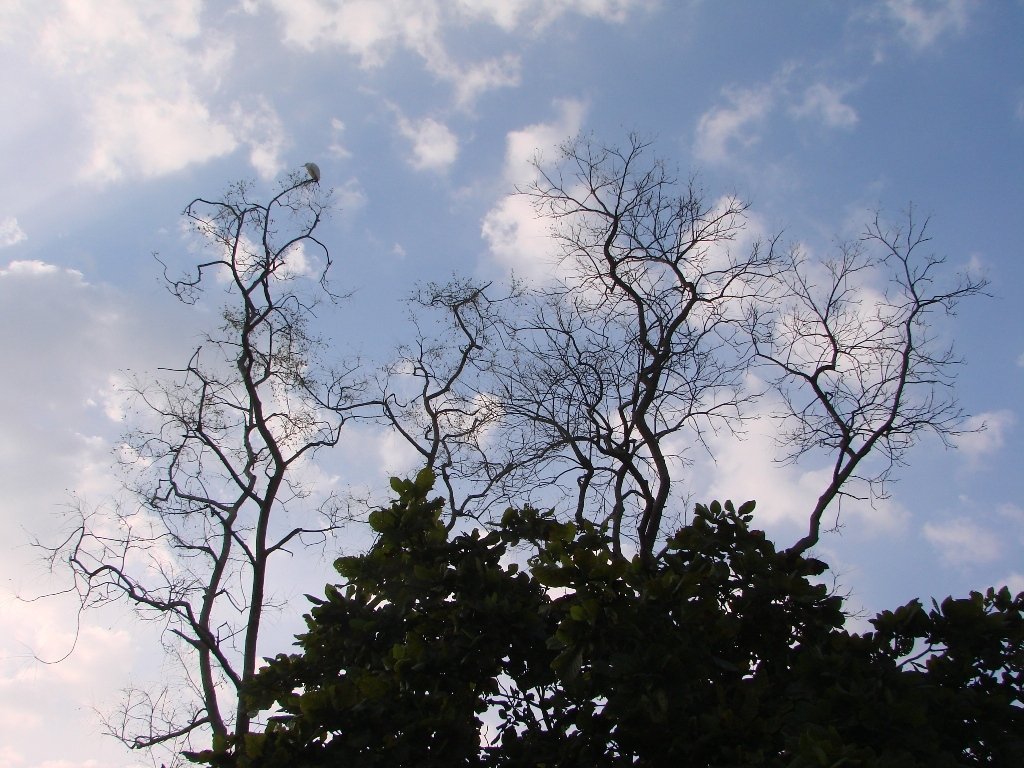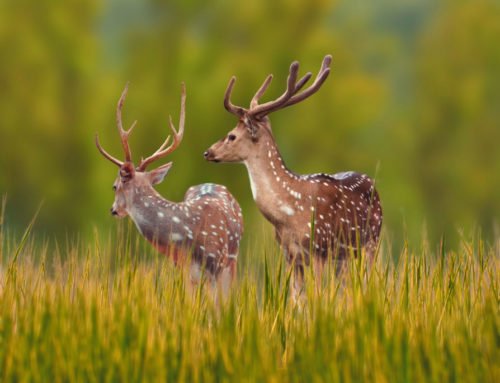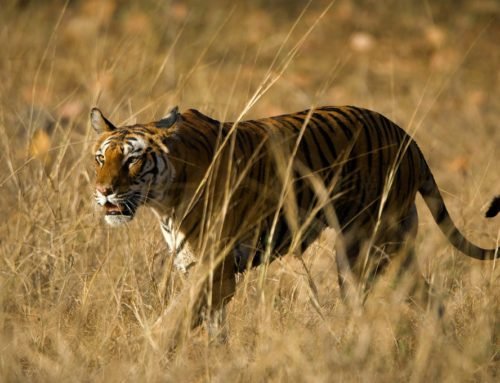Overview
- Features: 7 km nature trail through the forest
- Opening Times: Sunrise to sunset, daily
- Best Time to Visit: February to April
- Duration: 1 1/2 to 2 hours
- Travelled By: Foot
- Cost: Rs 150
- Address: Kanha National Park, Kanha, Madhya Pradesh, India
- Type: Activity, Wildlife
Author Reviews[display_rating_item_results rating_form_id=”2″ rating_entry_ids=”1″ show_category_filter=”false” show_options=”true” result_type=”star_rating” preserve_max_rating=”true” show_title=”false” show_count=”false” ]
Total Rating: [display_rating_result rating_form_id=”2″ show_count=”false” show_rich_snippets=true] [accordions load=”1″] [accordion title=”User Reviews” last] [display_rating_item_results rating_form_id=”5″ show_options=”true” result_type=”star_rating” preserve_max_rating=”true” show_title=”false” show_count=”true” show_rich_snippets=true] [/accordion] [accordion title=”Add Review”][display_rating_form show_email_input=”true” show_comment_textarea=”true” show_name_input=”true” rating_form_id=”5″] [/accordion] [/accordions]
Summary
The Kanha Forest Nature Trail is a well-marked 7km trail that leads from just inside Khatiya Gate and skirts along the edge of the park before looping back to the village. The nature trail is a great way to see the forest from a micro perspective. While fauna is always the main attraction, it is also important to learn about the biodiversity of the park and to understand how each eco system co-exists with each other.
Kanha Forest Nature Trail
The Kanha Forest Nature Trail is a well-marked 7km trail that leads from just inside Khatiya Gate and skirts along the edge of the park before looping back to the village. Tickets can be purchased from the ticket counter in front of Khatiya Gate which includes a guide who will escort you along the trail.
The viewing tower along the trail is a great vantage point to spot animals nearby without them spotting you. Climb to the top and look out across Kanha forest for some magnificent views of the meadows and forests around.
[singlepic id=338 w=720 h=560 float=center]
[singlepic id=345 w=720 h=560 float=center]
Mostly you’ll see a lot of monkeys and birds, but tigers do venture into this area on occasions. It’s not unusual to see deers in the vicinity as well.
[singlepic id=348 w=720 h=560 float=center]
The Kanha Forest Nature Trail is a great way to see the forest from a micro perspective. While fauna is always the main attraction, it is also important to learn about the biodiversity of the park and to understand how each eco system co-exists with each other. The forest is teeming with big and small creatures and if we pay close attention, there is so much to learn about the forest and its dwellers.
Kanha Tiger Reserve lies in the Maikal Hills which are part of the Satpura Mountains. It is situated between 450 and 900 metres above sea level. These hills are primarily made of basalt, a volcanic rock. It is estimated that this basalt was formed around 65 million years ago when hot magma (lava) was extruded on the earth’s surface and underwent rapid cooling. The hills and plateau of Kanha are capped by laterite and bauxite. These are formed when basalt undergoes weathering. Red gravelly soil and black cotton soil are found in low-lying areas.
[singlepic id=347 w=720 h=560 float=center]
A big part of the Kanha forest is made up of sal trees. Great height, well-formed trunk, dense crown and leafy almost through the year – that is the sal tree for you, the most majestic tree of Kanha. Sal sheds it leaves in February-March, but soon gets new ones. Within weeks, the colour of leaves changes from brownish-red to pale green and then to dark green. Off-white flowers fill the morning and evening air with their mild fragrance. Sal provides rich nutrition to many animals and birds in the form of flowers and fruits, particularly when other food resources are scarce.
The other species that grows in great abundance in the Kanha forest is bamboo. Few know that bamboo is a grass. It is one of the fastest-growing species of grass. In its early stages, you can almost see a shoot growing taller by many centimetres every day. Bamboo regenerates vigorously even though it is consumed by animals, birds and even humans. However, excessive grazing by livestock can destroy juvenile seedlings before the formation of rhizomes. Then, the bamboo cannot regenerate.
[singlepic id=346 w=720 h=560 float=center]
In every forest, plants, animals, insects and birds are closely interconnected. None of these can survive in isolation in the Kanha forest. When the trees are in flower, many insects are attracted by the pollen grains or nectar of the flowers. Many birds such as parakeets, drongos, mynas, sunbirds and flycatchers visit the trees to feed on the flowers as well as on the insects. This is a relationship in which every one benefits. The insects get pollen and nectar; the birds eat both the flowers and the insects, and the tree is pollinated by both. Patient observation will reveal to you how nature works and how the intricate interdependence sustains its balance.
While walking along the Kanha forest nature trail, it is important to observe the small life forms – the ants, caterpillars, dung beetles, butterflies and termites. They are no less interesting and, what is more, they play an invaluable role in the forest ecosystem. These little creatures are ceaselessly recycling nutrients, enriching the soil, pollinating flowers, controlling noxious weeds, decimating pest organisms and providing conditions essential for life to sustain. We are able to grow crops, vegetables and fruits only because of the help of insects. Besides, they form an important food source for birds and other insectivorous creatures.
[singlepic id=340 w=720 h=560 float=center]
Termite mounds abound in the Kanha forest and you will come across plenty on the nature trail. A termite mound may look like a heap of earth, but it is actually a well-designed, self-made home of termites. Termites are small, soft-bodied, social insects, usually pale-coloured. They use their saliva to bind the soil to build a mound. The mound has special chambers, tunnels and temperature-controlling systems. Termites have a definite ‘caste’ differentiation with specific roles for each caste. The four castes usually present are reproductive caste, supplementary reproductive caste, workers and soldiers. The digestive system of termites converts dead and decaying vegetation into soil-enriching nutrients.
[singlepic id=342 w=720 h=560 float=center]
Look out for spiders and their webs along your walk. There are several varieties to be spotted. Spider webs are made of silk. A spider web may look delicate, but spider silk is one of the strongest natural substances. For an equal diameter, spider silk is stronger than steel! It is waterproof and cannot be attacked by bacteria or fungi, which is why cobwebs remain around for so long. All spiders make silk. Spiders use silk to construct webs, catch their food, line their home, protect their eggs, bind their prey and even as a parachute to fly!
Whenever you see the dung of an animal in a forest, look for dung beetles near it. They come in different sizes. Both male and female extract the soft parts of the dung, roll them into a ball and then laboriously push the ball to their nest. The female then lays eggs in the centre of the dung ball. When the young hatch, they get ready made food in the form of dung. The dung also provides the new-born beetles safety from predators. In nature nothing is wasted.
[singlepic id=339 w=720 h=560 float=center]
While it is very rare to spot a tiger on the nature trail, you will see signs to indicate that they have been in the area not that long ago. One such sign is tiger scats. Although tigers are solitary animals they regularly communicate with others of their species by various means. Scats are one of the tools they use for this. Tigers often scrape the ground with their hind feet after defecation and cover scat deposits lightly with leaves and earth. Scraping creates a prominent, easily seen patch of bare soil, which draws the attention of other tigers to the scat deposit and the scent present in it. Scats also provide vital information to researchers on the prey the tiger has consumed. It is also possible to ascertain the quantum of a particular species in the food intake of tigers by studying a large number of scats.
[singlepic id=344 w=720 h=560 float=center]
Another big clue that a tiger has walked past the area is pugmarks. If you look at the ground closely, especially along the river banks, you will see pugmarks in the soil. Pugmarks are unique, just like our footprints. We can find out whether the tiger is a male or female by studying its pugmarks. Pugmarks of male tigers are squarer and wider, while those of the females are more rectangular. Pugmarks reveal the direction in which the tiger went and how long ago. If carefully observed, pugmarks can give us a clue to whether the animal is sick or injured and even help us in estimating its age. Pugmarks have been used as a major tool in counting tigers in conjunction with other methods. They are also used to track tigers and provide vital information in many research studies.
[singlepic id=341 w=720 h=560 float=center]
If predators are built to kill, then prey species have evolved an arsenal of defences to outwit predators. Most prey animals have shape, colours and mechanisms that help them to escape predators. For example, the chital has a speckled coat of brown and white which helps it to blend in with the surrounding sun-dappled forest. Several insects have stings, or look like other noxious creatures to fool predators. Freezing in mid-motion to blend with the surrounding is a technique adopted by deer fawns, sambar, and several ground-dwelling birds like quail and partridge.
While a Kanha forest nature trail walk might not be as exciting as a tiger safari, it’s a great way to learn about the eco system of the forest. In addition to spotting little creatures along the way, there’s a high probability you’ll see not just monkeys and birds but also deers and other fauna. And being on the ground instead of the safety of a jeep makes it that much more adventurous.





Is Kanha the best National park for Tigers in India?
Hi Clive, Kanha is one of the more picturesque national parks in India but you may find Tigers harder to find as a result.